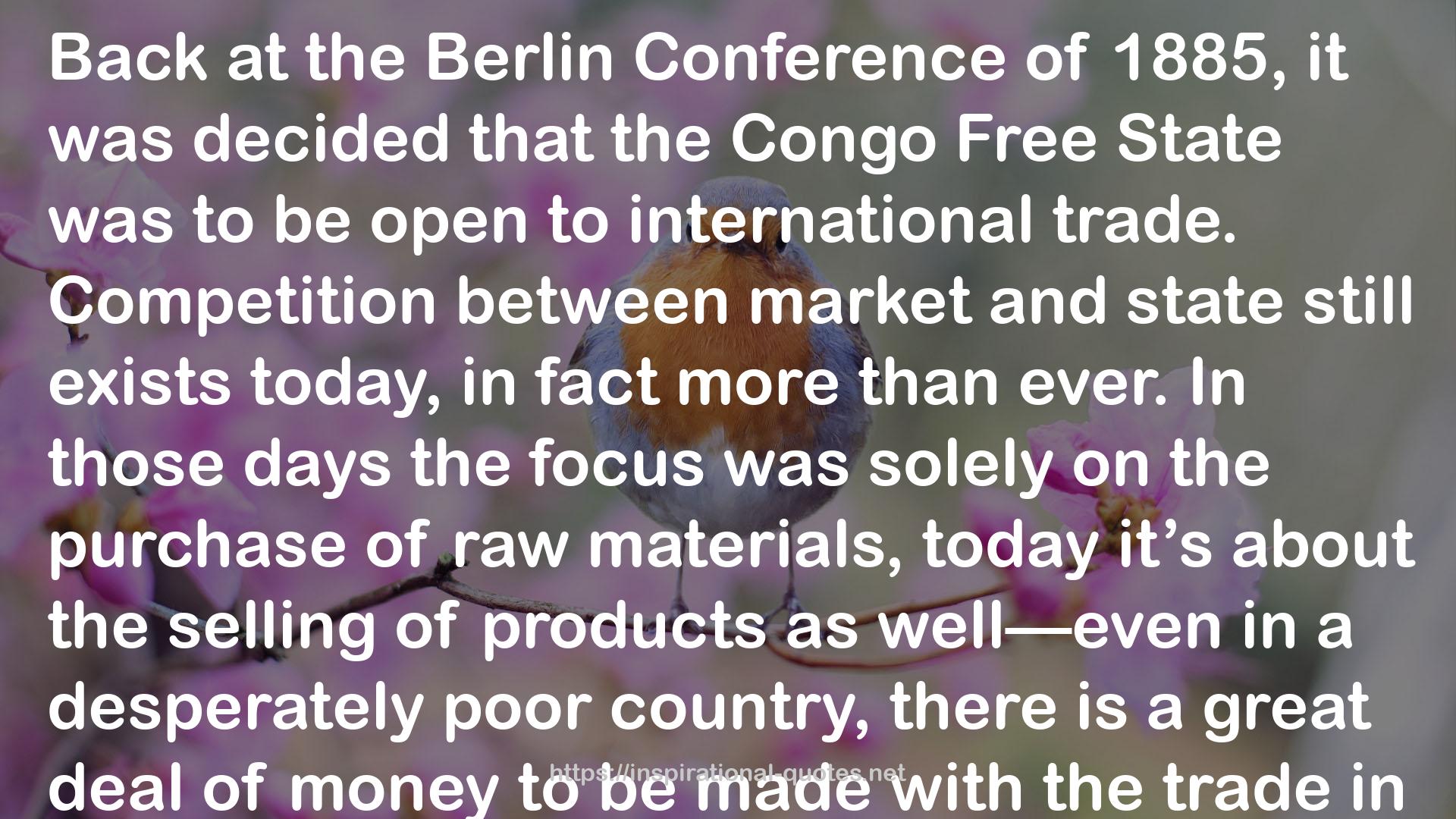3
" Congo, during the first six months of its existence, would have to deal with a serious military mutiny, the massive exodus of those Belgians who had remained behind, an invasion by the Belgian army, a military intervention by the United Nations, logistical support from the Soviet Union, an extremely heated stretch of the Cold War, an unparalleled constitutional crisis, two secessions that covered a third of its territory, and, to top it all off, the imprisonment, escape, arrest, torture, and murder of its prime minister: no, absolutely no one had seen that coming. "
― David Van Reybrouck , Congo. Een geschiedenis
13
" Kimbanguism is an extremely peace-loving religion, yet brimming with military allusions. Those symbols were not originally part of the religion, but were copied in the 1930s from the Salvation Army, a Christian denomination that, unlike theirs, was not banned at that time. The faithful believed that the S on the Christian soldiers’ uniform stood not for “Salvation” but for “Simon,” and became enamored of the army’s military liturgy. Today, green is still the color of Kimbanguism, and the hours of prayer are brightened up several times a day by military brass bands. Those bands, by the way, are truly impressive. It is a quiet Monday evening when I find myself on the square. While the martial music rolls on and on, played first by the brass section, then by flutes, the faithful shuffle forward to be blessed by the spiritual leader. In groups of four or five, they kneel before the throne. The spiritual leader himself is standing. He wears a gray, short-sleeved suit and gray socks. He is not wearing shoes. In his hand he holds a plastic bottle filled with holy water from the “Jordan,” a local stream. The believers kneel and let themselves be anointed by the Holy Spirit. Children open their mouths to catch a spurt of holy water. A young deaf man asks for water to be splashed on his ears. And old woman who can hardly see has her eyes sprinkled. The crippled display their aching ankles. Fathers come by with pieces of clothing belonging to their sick children. Mothers show pictures of their family, so the leader can brush them with his fingers. The line goes on and on. Nkamba has an average population of two to three thousand, plus a great many pilgrims and believers on retreat. People come from Kinshasa and Brazzaville, as well as from Brussels or London. Thousands of people come pouring in, each evening anew. For an outsider this may seem like a bizarre ceremony, but in essence it is no different from the long procession of believers who have been filing past a cave at Lourdes in the French Pyrenees for more than a century. There too, people come from far and near to a spot where tradition says unique events took place, there too people long for healing and for miracles, there too people place all their hope in a bottle of spring water. This is about mass devotion and that usually says more about the despair of the masses than about the mercy of the divine. After the ceremony, during a simple meal, I talk to an extremely dignified woman who once fled Congo as a refugee and has been working for years as a psychiatric nurse in Sweden. She loves Sweden, but she also loves her faith. If at all possible, she comes to Nkamba each year on retreat, especially now that she is having problems with her adolescent son. She has brought him along. “I always return to Sweden feeling renewed,” she says. "
― David Van Reybrouck , Congo. Een geschiedenis

